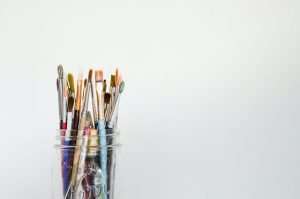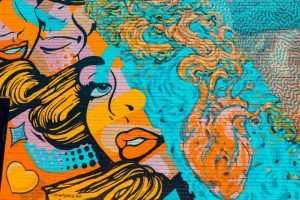I’m a bit surprised to see how frequently this is asked, and I’m a bit surprised that the answer is not obvious.
So, yes, you do need to take drawing classes. No, there is no way around it. You can’t draw well without instruction; you can’t draw well on your own. The only way to learn it is through a teacher. The only way to learn it well is through good instruction. And there are no short cuts.
I sometimes get asked if there’s some way to learn it on your own or if it’s something that you can learn on your own or if you can teach yourself how to draw the human figure or if there are any books on drawing the human figure that someone could use and then just practice on their own, outside of any sort of class program or curriculum or instruction and be able to just learn how to draw the human figure in detail like that.
Yes and no and no and no.
Any drawing book has information in it that’s useful for learning how to draw the human figure, but again, when I say drawing class, I mean a structured environment where the person who’s teaching knows what they’re doing and has been equipped by their school of art with the ability to impart knowledge effectively
Drawing the human figure from life is also a great way to learn about anatomy, proportions, and muscles through practice. There’s something about using your hands to draw that really helps you learn.
How to Draw the Human Figure is a step-by-step guide on how to draw the human figure from any angle, along with short descriptions of the major muscles of the body that you can use as you practice.
There are two fundamental approaches to drawing the human figure. One is to learn how to draw the body in isolation, first from one angle, then from another. This is a good approach for an artist who wants to specialize in figures (illustrations for books, packaging, etc.) or those who want to master a particular kind of drawing style (realism, comic books, anime). It doesn’t work as well for artists who want to develop an understanding of the figure as a whole, and it is not useful at all for someone who wants to be able to draw spontaneously from direct observation.
The other approach is to learn how to draw the figure in context—in other words, drawing figures interacting with each other. This is a better approach for artists who want to develop a better understanding of form and space through studying the human figure—and it’s also the only way that students can learn how the figure relates to objects in its environment. This means learning how to set up your props and establishing “camera angles,” creating depth and distances between objects, using shadows and highlights, and so on.
The biggest problem with this approach is that it’s incomplete as it stands. In order to make use of what you’ve learned you have to be able to transfer your
Art education
Drawing the human figure is one of the most challenging subjects to master. If done correctly it is also one of the most rewarding.
Most people, artists and art students included, find drawing the human figure a difficult and intimidating subject. The human figure is a complex object, and drawing it well requires an understanding of its structure, proportion and movement.
What makes drawing the human figure so difficult?
In this article we will look at why drawing the human figure is such a challenging subject; what makes it different from drawing other objects; and how you can use this information to learn to draw the human figure more accurately.
There are many sources of inspiration for an artist. There are models, there is the eye and the hand, there is imagination and there is knowledge. Knowledge is the foundation of any fine art and can be achieved through study and practice.
The human figure is one of the most difficult things to draw. The model provides a subject that must be observed closely and understood thoroughly. If you do not have access to a live model, or just need help with a specific area of your work, you can learn from print reference materials, or from other artists work you admire.
Get familiar with the proportions of the human figure first. Learn about them in the classroom by using your instructor as the model. Many times these lectures will be done with no drawing materials provided so that you can focus on what you hear, rather than what it looks like. The human body is not easy to put down on paper and will require practice to develop your skills at proportioning correctly.
Artists who have become experts in drawing the figure have learned to observe it closely, they have learned all its proportions (lengths & widths), they are able to draw it accurately with accuracy and confidence because they know their subject well; they know all its parts and what those parts look like when they are
The human figure is the foundation for all visual art. If you can’t draw well, then you can’t draw. Period.
The most important part of learning to draw is learning how to observe and understand the human figure; this is what you need to do before you can ever begin drawing or painting a figure.
Once you’ve learned how to observe and understand the human figure, then comes the fun part- learning how to render the human form in a wide range of styles and mediums.
The most important thing I can tell you about drawing figures, is to learn how to observe and understand them. The rest will come naturally once that foundation is firmly in place.
After all these years of teaching, I still believe that the most important part of learning how to draw or paint figures- is learning how to observe and understand them first.”
Art is a creative means of communication in which the artist uses the language of visual art. The artist uses this visual language to produce a work of art for others to interpret and respond to. The work can be a drawing, painting, sculpture, or even architecture. Art is the expression of the imagination and emotion. The term art comes from the Latin word ars which means skill. And artistic ability can be enhanced by learning to draw people. If you are interested in enhancing your artistic skills, you should learn to draw people in various poses and situations.
Students can use drawing knowledge to enhance their academic studies and their life experiences. People who have studied drawing techniques have reported that it helps them focus on details as well as see things from different perspectives. Even very young children can begin learning how to draw people through simple lessons such as stick figures.
Learning how to draw people will not only enhance your artistic abilities but will also help you become a better communicator for both academics and life in general.


